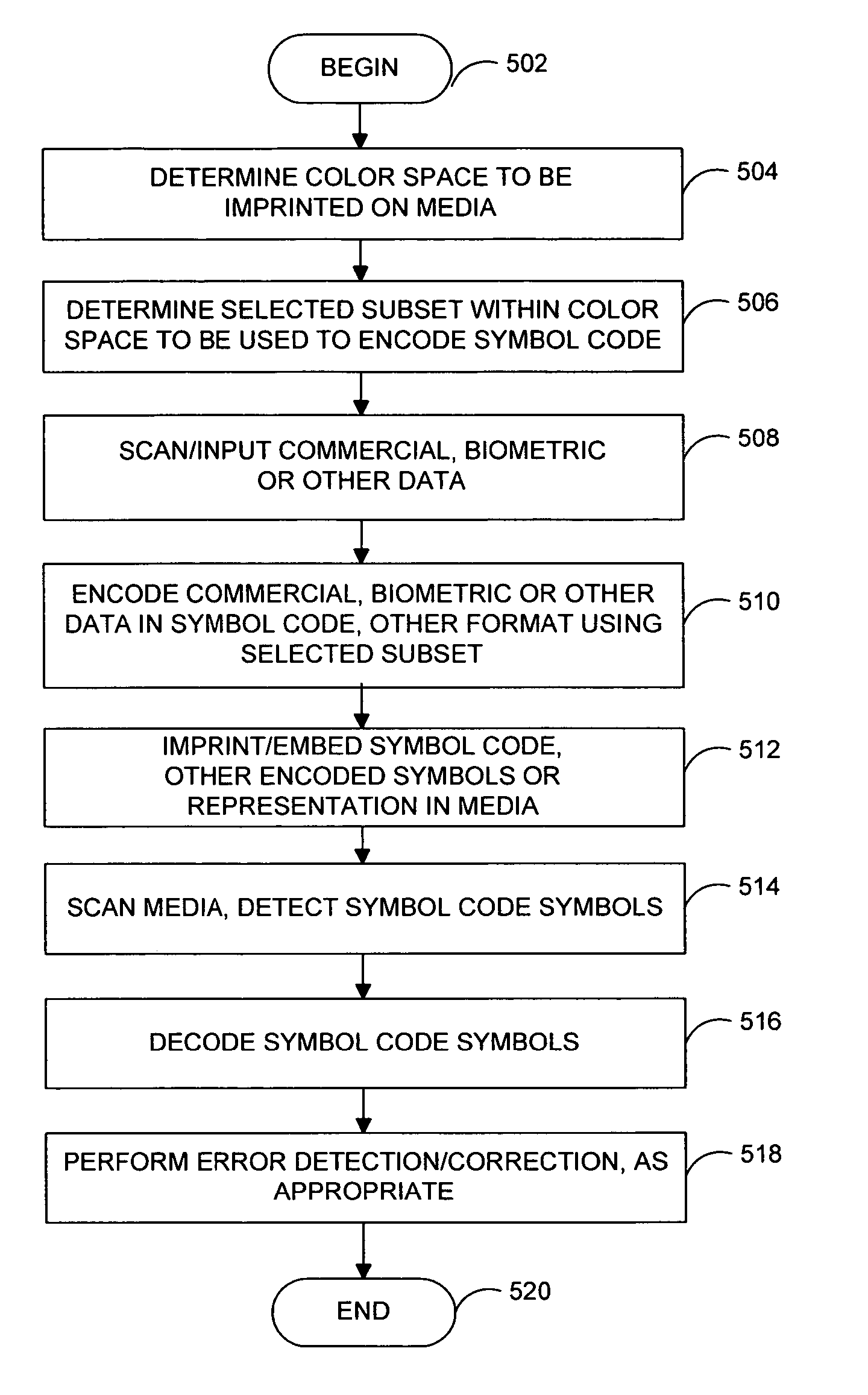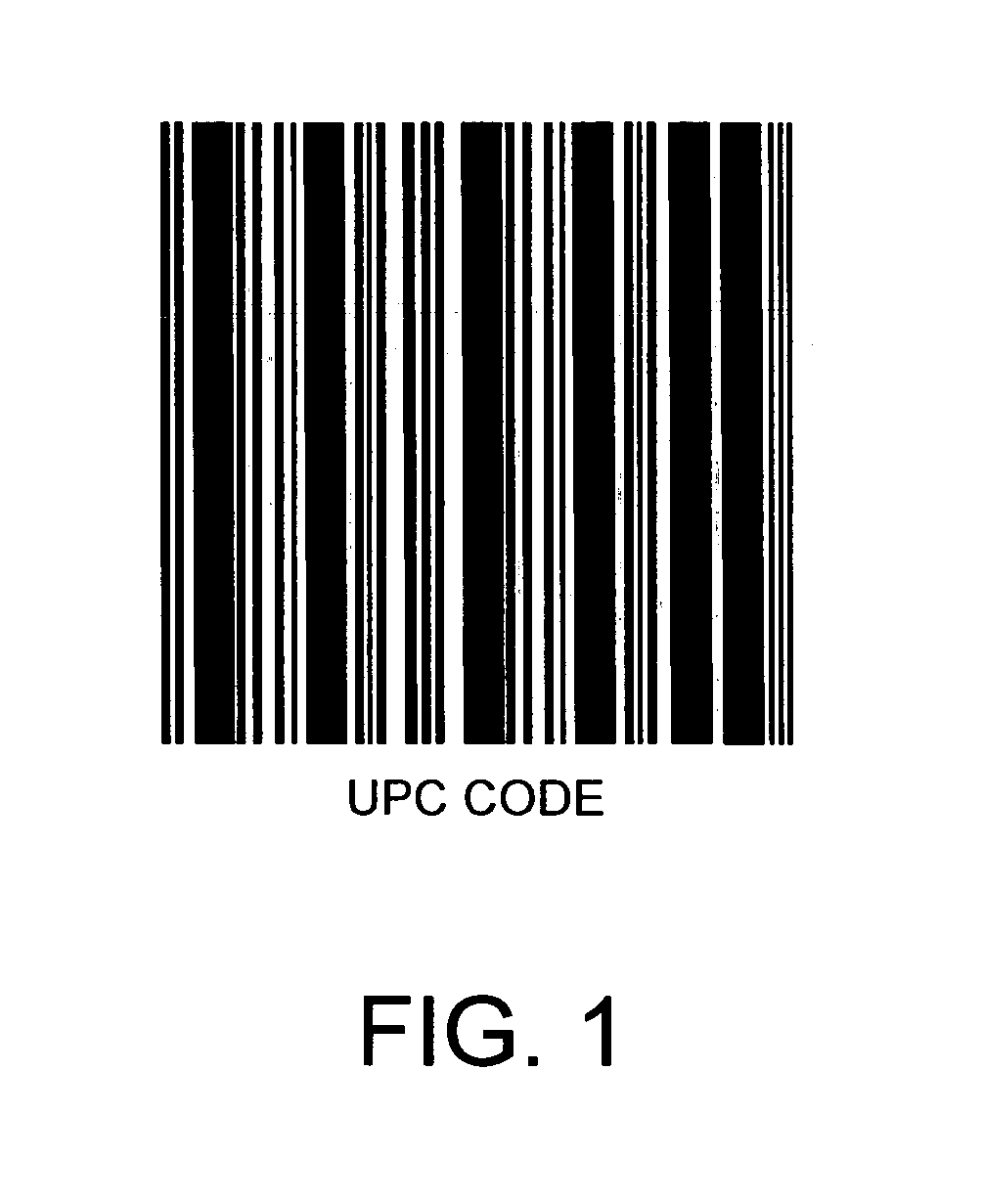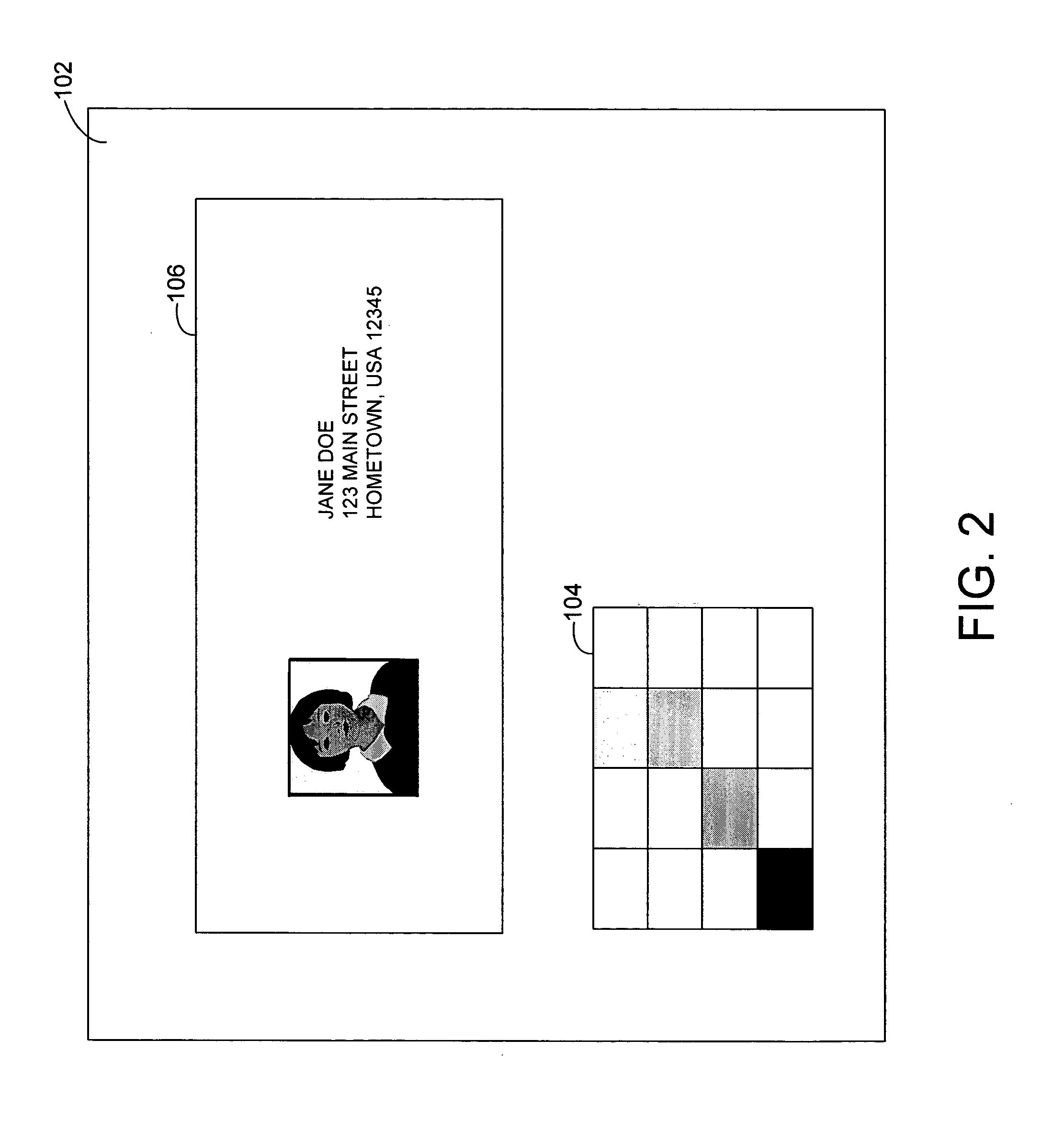System and method for selectively encoding a symbol code in a color space
a color space and symbol code technology, applied in the field of electronic transactions and identification, can solve the problems of limited encoding technology to black and white color schemes, inability to achieve particularly high informnation density in terms of bits embedded per square inch, and inability to achieve related codes. to achieve the effect of increasing the theoretical information density, reducing detection errors, and increasing performance and accuracy
- Summary
- Abstract
- Description
- Claims
- Application Information
AI Technical Summary
Benefits of technology
Problems solved by technology
Method used
Image
Examples
Embodiment Construction
[0012]FIG. 2 illustrates an architecture in which a system and method for selectively encoding a symbol code in a color space may operate, according to an embodiment of the invention. As illustrated in that figure, a symbol code 104 such as a bar code, square or other block code, or other geometrically arranged symbol set or code may be imprinted or embedded in or on media 102. Media 102 may be or include an object such as a paper, plastic or other material formed as a card or other badge, voucher, certificate or other document or object. Media 102 may for instance include or represent an identification object such as a driver's license, a passport, an identification badge. Media 102 may for instance likewise include or represent a transaction object such as a credit card, paper check or smart check, a telephone usage card or other stored value object, or other commercial or transactional object. Other types of media and objects are possible. Media 102 may likewise be imprinted or e...
PUM
 Login to View More
Login to View More Abstract
Description
Claims
Application Information
 Login to View More
Login to View More - R&D
- Intellectual Property
- Life Sciences
- Materials
- Tech Scout
- Unparalleled Data Quality
- Higher Quality Content
- 60% Fewer Hallucinations
Browse by: Latest US Patents, China's latest patents, Technical Efficacy Thesaurus, Application Domain, Technology Topic, Popular Technical Reports.
© 2025 PatSnap. All rights reserved.Legal|Privacy policy|Modern Slavery Act Transparency Statement|Sitemap|About US| Contact US: help@patsnap.com



